
English Encyclopedia
 International cities
International cities


 Architecture
Architecture
 England
England
 Eurovision Song Contest,ESC
Eurovision Song Contest,ESC

 Financial
Financial
 ***Global Financial Center
***Global Financial Center
 UEFA European Championship 2020
UEFA European Championship 2020

 History
History
 N 2000 - 2100 AD
N 2000 - 2100 AD

 History
History
 M 1500 - 2000 AD
M 1500 - 2000 AD

 History
History
 J 0 - 500 AD
J 0 - 500 AD

 History
History
 K 500 - 1000 AD
K 500 - 1000 AD

 History
History
 L 1000 - 1500 AD
L 1000 - 1500 AD

 International cities
International cities
 ***Global Urban Economic Competitiveness
***Global Urban Economic Competitiveness
 ITU World Championship Series
ITU World Championship Series

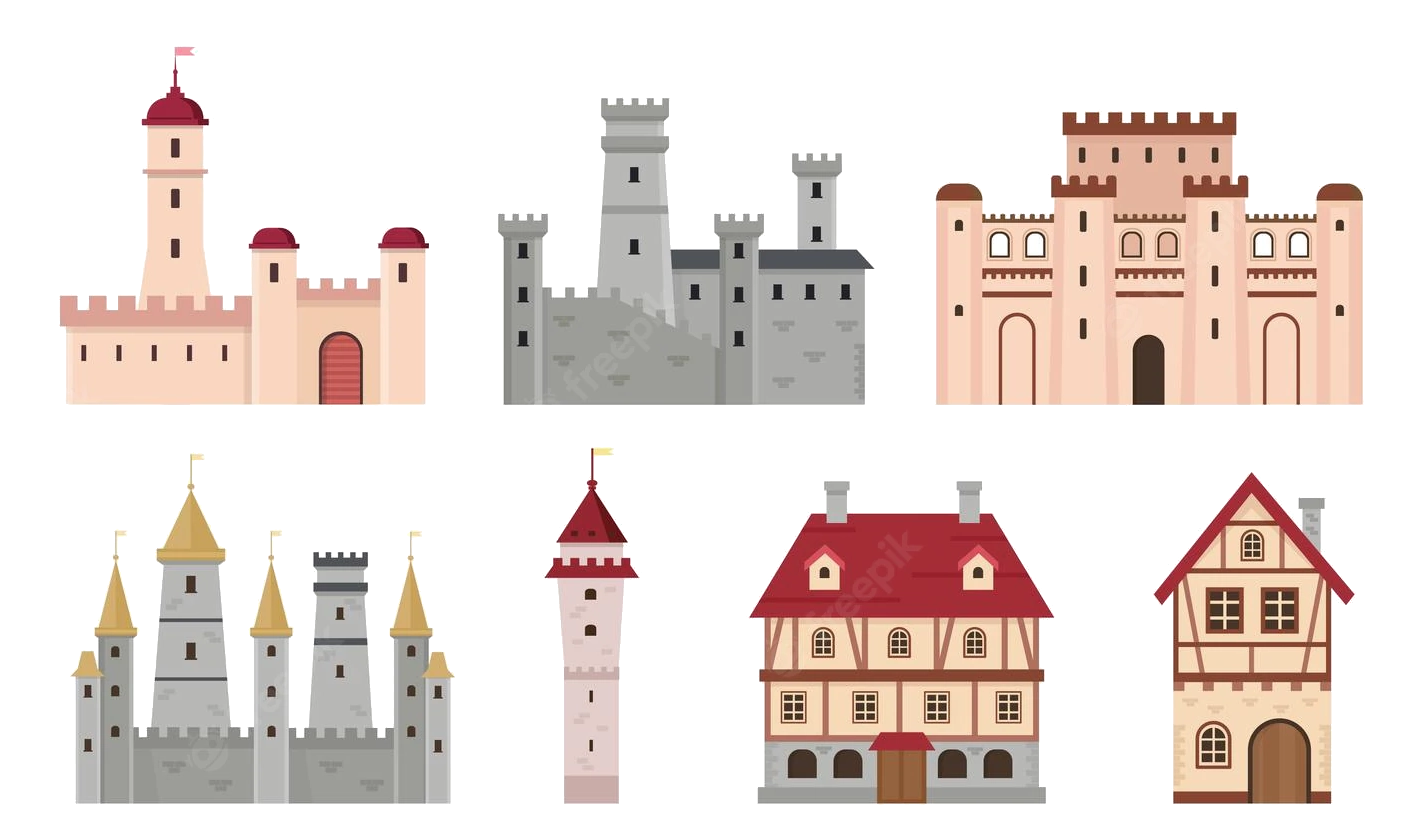 Medieval cities in Europe
Medieval cities in Europe
 Olympic Summer Games
Olympic Summer Games
 1908 Summer Olympics
1908 Summer Olympics
 1944 Summer Olympics
1944 Summer Olympics
 1948 Summer Olympics
1948 Summer Olympics
 2012 Summer Olympics
2012 Summer Olympics
 Silk road
Silk road

 Sport
Sport

 Sport
Sport
 Triathlon
Triathlon
 United Kingdom
United Kingdom

 Cities founded by the Romans
Cities founded by the Romans

 World Heritage
World Heritage

 Important port
Important port

London (/ˈlʌndən/ ( listen) LUN-dən) is the capital and most populous city of England and the United Kingdom.[8][9] Standing on the River Thames in the south east of the island of Great Britain, London has been a major settlement for two millennia. It was founded by the Romans, who named it Londinium.[10] London's ancient core, the City of London, largely retains its 1.12-square-mile (2.9 km2) medieval boundaries. Since at least the 19th century, "London" has also referred to the metropolis around this core, historically split between Middlesex, Essex, Surrey, Kent and Hertfordshire,[11][12][13] which today largely makes up Greater London,[14][15][note 1] a region governed by the Mayor of London and the London Assembly.[16][note 2][17]
listen) LUN-dən) is the capital and most populous city of England and the United Kingdom.[8][9] Standing on the River Thames in the south east of the island of Great Britain, London has been a major settlement for two millennia. It was founded by the Romans, who named it Londinium.[10] London's ancient core, the City of London, largely retains its 1.12-square-mile (2.9 km2) medieval boundaries. Since at least the 19th century, "London" has also referred to the metropolis around this core, historically split between Middlesex, Essex, Surrey, Kent and Hertfordshire,[11][12][13] which today largely makes up Greater London,[14][15][note 1] a region governed by the Mayor of London and the London Assembly.[16][note 2][17]
London is one of the leading global cities[18][19] in the arts, commerce, education, entertainment, fashion, finance, healthcare, media, professional services, research and development, tourism and transportation.[20][21][22] It is the world's largest financial centre[23][24][25][26] and has the fifth or sixth largest metropolitan area GDP in the world.[note 3][27][28] London is often regarded as a world cultural capital.[29][30][31] It is the world's most-visited city as measured by international arrivals[32] and has the world's largest city airport system measured by passenger traffic.[33] It is the world's leading investment destination,[34][35][36][37] hosting more international retailers[38][39] and ultra high-net-worth individuals[40][41] than any other city. London's universities form the largest concentration of higher education institutes in Europe.[42] In 2012, London became the first city to have hosted the modern Summer Olympic Games three times.[43]
London has a diverse range of people and cultures, and more than 300 languages are spoken in the region.[44] Its estimated mid-2016 municipal population (corresponding to Greater London) was 8,787,892,[4] the largest of any city in the European Union[45] and accounting for 13.4% of the UK population.[46] London's urban area is the second most populous in the EU, after Paris, with 9,787,426 inhabitants at the 2011 census.[47] The city's metropolitan area is the most populous in the EU with 14,040,163 inhabitants in 2016,[note 4][3] while the Greater London Authority states the population of the city-region (covering a large part of the south east) as 22.7 million.[48][49] London was the world's most populous city from around 1831 to 1925.[50]
London contains four World Heritage Sites: the Tower of London; Kew Gardens; the site comprising the Palace of Westminster, Westminster Abbey, and St Margaret's Church; and the historic settlement of Greenwich (in which the Royal Observatory, Greenwich defines the Prime Meridian, 0° longitude, and GMT).[51] Other landmarks include Buckingham Palace, the London Eye, Piccadilly Circus, St Paul's Cathedral, Tower Bridge, Trafalgar Square and The Shard. London is home to numerous museums, galleries, libraries, sporting events and other cultural institutions, including the British Museum, National Gallery, Natural History Museum, Tate Modern, British Library and West End theatres.[52] The London Underground is the oldest underground railway network in the world.
 California State Route 1
California State Route 1

 California-CA
California-CA

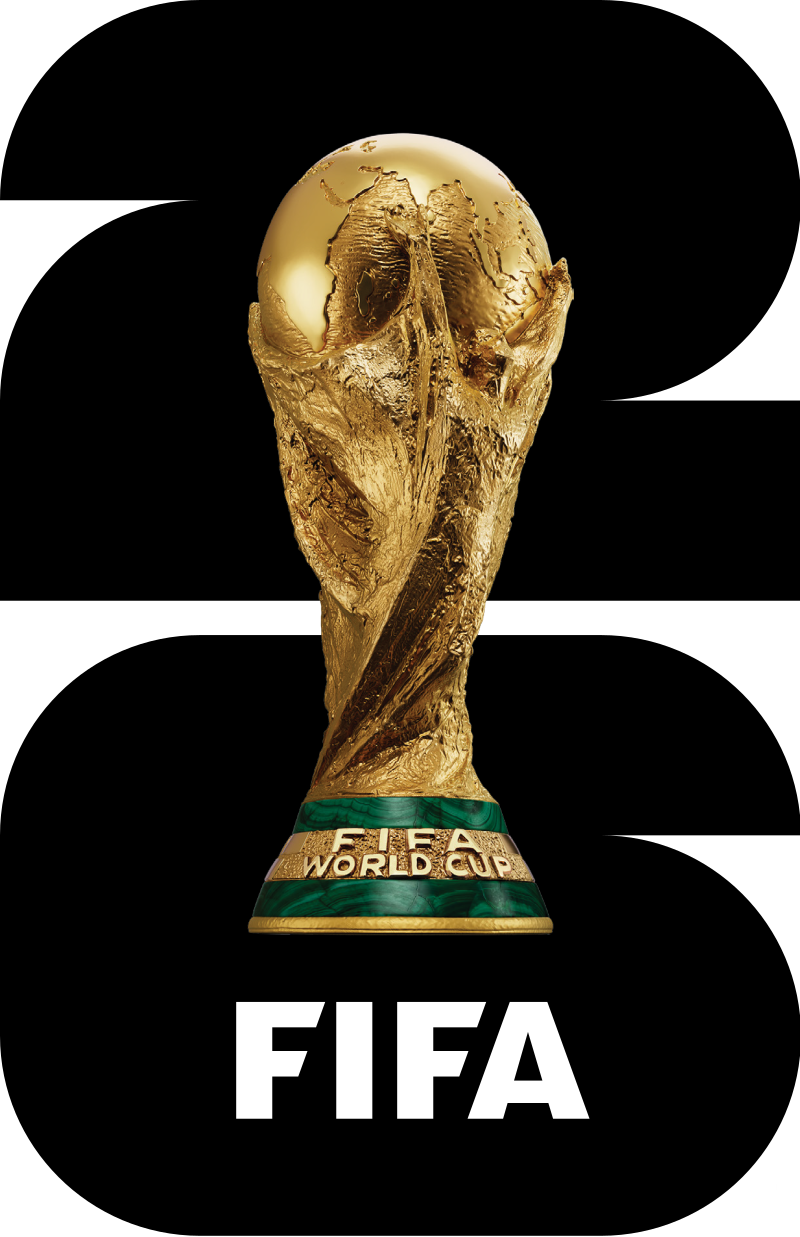 FIFA Fussball-Weltmeisterschaft 2026
FIFA Fussball-Weltmeisterschaft 2026

 Financial
Financial
 ***Global Financial Center
***Global Financial Center

 History
History
 N 2000 - 2100 AD
N 2000 - 2100 AD

 History
History
 M 1500 - 2000 AD
M 1500 - 2000 AD

 International cities
International cities
 ***Global Urban Economic Competitiveness
***Global Urban Economic Competitiveness
 League of Legends
League of Legends
 League of Legends World Championship
League of Legends World Championship
 Olympic Summer Games
Olympic Summer Games


 Important port
Important port

Los Angeles (US: /lɔːs ˈændʒələs/ ( listen);[16][a] Spanish for "The Angels"; Spanish: Los Ángeles; Spanish: [los ˈaŋxeles]; officially the City of Los Angeles, known colloquially by its initials L.A.) is the second-most populous city in the United States, after New York City, and the most populous city in the Western United States. With an estimated population of four million,[17] Los Angeles is the largest and most populous city in the state of California and the cultural, financial, and commercial center of Southern California. Nicknamed the "City of Angels" partly because of its name's Spanish meaning, Los Angeles is known for its Mediterranean climate, ethnic diversity, and sprawling metropolis.
listen);[16][a] Spanish for "The Angels"; Spanish: Los Ángeles; Spanish: [los ˈaŋxeles]; officially the City of Los Angeles, known colloquially by its initials L.A.) is the second-most populous city in the United States, after New York City, and the most populous city in the Western United States. With an estimated population of four million,[17] Los Angeles is the largest and most populous city in the state of California and the cultural, financial, and commercial center of Southern California. Nicknamed the "City of Angels" partly because of its name's Spanish meaning, Los Angeles is known for its Mediterranean climate, ethnic diversity, and sprawling metropolis.
Los Angeles is located in a large basin bounded by the Pacific Ocean on one side and by mountains as high as 10,000 feet (3,000 m) on the others. The city proper, which covers about 469 square miles (1,210 km2),[18] is the seat of Los Angeles County, the most populated county in the country. Los Angeles is the principal city of the Los Angeles metropolitan area; with a population of 13.1 million residents it is the second largest in the United States after that of New York City.[19] It is part of the Los Angeles-Long Beach combined statistical area, also the second most populous in the nation with a 2015 estimated population of 18.7 million.[20]
Los Angeles is one of the most substantial economic engines within the United States, with a diverse economy in a broad range of professional and cultural fields. Los Angeles is also famous as the home of Hollywood, a major center of the world entertainment industry. A global city, it has been ranked 6th in the Global Cities Index and 9th in the Global Economic Power Index. The Los Angeles combined statistical area also has a gross metropolitan product of $831 billion (as of 2008), making it the third-largest in the world, after the Tokyo and New York metropolitan areas. Los Angeles hosted the 1932 and 1984 Summer Olympics and will host the event for a third time in 2028. The city also hosted the Miss Universe pageant twice, in 1990 and 2006.
Historically home to the Chumash and Tongva, Los Angeles was claimed by Juan Rodríguez Cabrillo for Spain in 1542 along with the rest of what would become Alta California. The city was officially founded on September 4, 1781, by Spanish governor Felipe de Neve. It became a part of Mexico in 1821 following the Mexican War of Independence. In 1848, at the end of the Mexican–American War, Los Angeles and the rest of California were purchased as part of the Treaty of Guadalupe Hidalgo, becoming part of the United States. Los Angeles was incorporated as a municipality on April 4, 1850, five months before California achieved statehood. The discovery of oil in the 1890s brought rapid growth to the city.[21] The completion of the Los Angeles Aqueduct in 1913, delivering water from Eastern California, later assured the city's continued rapid growth.
 England
England
 Manchester
Manchester

 History
History
 ITU World Championship Series
ITU World Championship Series
 Silk road
Silk road

 Sport
Sport
 Triathlon
Triathlon
 United Kingdom
United Kingdom

 Cities founded by the Romans
Cities founded by the Romans

 Important port
Important port

Manchester (/ˈmæntʃɪstər, -tʃɛs-/)[5][6] is a city and metropolitan borough in Greater Manchester, England, with a population of 545,500 as of 2017.[7] It lies within the United Kingdom's third-most populous metropolitan area, with a population of 3.2 million.[8] Manchester is fringed by the Cheshire Plain to the south, the Pennines to the north and east, and an arc of towns with which it forms a continuous conurbation. The local authority is Manchester City Council.
The recorded history of Manchester began with the civilian settlement associated with the Roman fort of Mamucium or Mancunium, which was established in about AD 79 on a sandstone bluff near the confluence of the rivers Medlock and Irwell. It was historically a part of Lancashire, although areas of Cheshire south of the River Mersey were incorporated in the 20th century.[9] Throughout the Middle Ages Manchester remained a manorial township but began to expand "at an astonishing rate" around the turn of the 19th century. Manchester's unplanned urbanisation was brought on by a boom in textile manufacture during the Industrial Revolution,[10] and resulted in it becoming the world's first industrialised city.[11]
Manchester achieved city status in 1853. The Manchester Ship Canal opened in 1894, creating the Port of Manchester and directly linking the city to the Irish Sea, 36 miles (58 km) to the west. Its fortune declined after the Second World War, owing to deindustrialisation, but the IRA bombing in 1996 led to extensive investment and regeneration.[12]
In 2014, the Globalization and World Cities Research Network ranked Manchester as a beta world city, the highest-ranked British city apart from London.[13] Manchester is the third-most visited city in the UK, after London and Edinburgh.[14] It is notable for its architecture, culture, musical exports, media links, scientific and engineering output, social impact, sports clubs and transport connections. Manchester Liverpool Road railway station was the world's first inter-city passenger railway station; scientists first split the atom, developed the stored-program computer and produced graphene in the city. Manchester hosted the 2002 Commonwealth Games.

Melbourne (/ˈmɛlbərn/ ( listen) MEL-bərn)[note 1] (Boonwurrung: Naarm)[9] is the capital and most-populous city of the Australian state of Victoria, and the second-most populous city in both Australia and Oceania.[1] Its name generally refers to a 9,993 km2 (3,858 sq mi) metropolitan area known as Greater Melbourne,[10] comprising an urban agglomeration of 31 local municipalities,[11] although the name is also used specifically for the local municipality of City of Melbourne based around its central business area. The city occupies much of the northern and eastern coastlines of Port Phillip Bay and spreads into the Mornington Peninsula and the hinterlands towards the Yarra Valley and the Dandenong and Macedon Ranges. It has a population over 5 million (19% of the population of Australia, as per 2020), mostly residing to the east side of the city centre, and its inhabitants are commonly referred to as "Melburnians".[note 2]
listen) MEL-bərn)[note 1] (Boonwurrung: Naarm)[9] is the capital and most-populous city of the Australian state of Victoria, and the second-most populous city in both Australia and Oceania.[1] Its name generally refers to a 9,993 km2 (3,858 sq mi) metropolitan area known as Greater Melbourne,[10] comprising an urban agglomeration of 31 local municipalities,[11] although the name is also used specifically for the local municipality of City of Melbourne based around its central business area. The city occupies much of the northern and eastern coastlines of Port Phillip Bay and spreads into the Mornington Peninsula and the hinterlands towards the Yarra Valley and the Dandenong and Macedon Ranges. It has a population over 5 million (19% of the population of Australia, as per 2020), mostly residing to the east side of the city centre, and its inhabitants are commonly referred to as "Melburnians".[note 2]
The area now occupied by Melbourne was home to Aboriginal peoples for over 40,000 years and served as a popular meeting place for local Kulin nation clans,[14] Naarm being the traditional Boon wurrung name for Port Phillip Bay.[9] A short-lived penal settlement was built at Port Phillip, then part of the British colony of New South Wales, in 1803, but it was not until 1835, with the arrival of free settlers from Van Diemen’s Land (modern-day Tasmania), that Melbourne was founded.[14] It was incorporated as a Crown settlement in 1837, and named after the then British Prime Minister, William Lamb, 2nd Viscount Melbourne.[14] In 1851, four years after Queen Victoria declared it a city, Melbourne became the capital of the new colony of Victoria.[15] During the 1850s Victorian gold rush, the city entered a lengthy boom period that, by the late 1880s, had transformed it into one of the world's largest and wealthiest metropolises.[16][17] After the federation of Australia in 1901, it served as the interim seat of government of the new nation until Canberra became the permanent capital in 1927.[18] Today, it is a leading financial centre in the Asia-Pacific region and ranks 23rd globally in the 2021 Global Financial Centres Index.[19]
Melbourne is home to many of Australia's best-known landmarks, such as the Melbourne Cricket Ground, the National Gallery of Victoria and the World Heritage-listed Royal Exhibition Building. Noted for its cultural heritage, the city gave rise to Australian rules football, Australian impressionism and Australian cinema, and has more recently been recognised as a UNESCO City of Literature and a global centre for street art, live music and theatre. It hosts major annual international events, such as the Australian Grand Prix and the Australian Open, and also hosted the 1956 Summer Olympics and the 2006 Commonwealth Games. Melbourne consistently ranked as the world's most liveable city for much of the 2010s.[20]
Melbourne Airport, also known as the Tullamarine Airport, is the second-busiest airport in Australia, and the Port of Melbourne is the nation's busiest seaport.[21] Its main metropolitan rail terminus is Flinders Street station and its main regional rail and road coach terminus is Southern Cross station. It also has Australia's most extensive freeway network and the largest urban tram network in the world.

 FIFA Fussball-Weltmeisterschaft 2026
FIFA Fussball-Weltmeisterschaft 2026

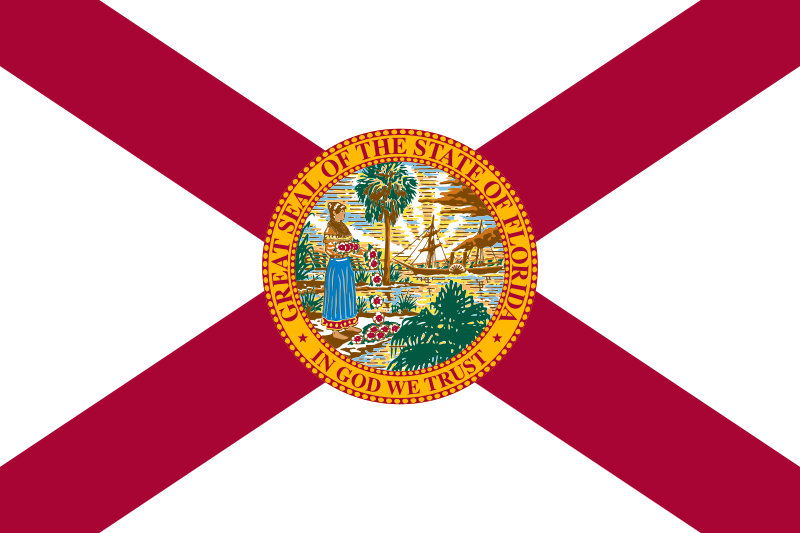 Florida-FL
Florida-FL

 History
History
 N 2000 - 2100 AD
N 2000 - 2100 AD

 History
History
 M 1500 - 2000 AD
M 1500 - 2000 AD

 International cities
International cities
 ***Global Urban Economic Competitiveness
***Global Urban Economic Competitiveness


 Important port
Important port

Miami (/maɪˈæmi/), officially the City of Miami, is a coastal metropolis located in Miami-Dade County in southeastern Florida (United States). With a population of 467,963 as of the 2020 census,[10] it is the 44th-largest city in the United States and the core of the nation's eighth-largest metropolitan area.[6] The city has the third-largest skyline in the U.S. with over 300 high-rises,[11] 58 of which exceed 491 ft (150 m).[12]
Miami is a major center and leader in finance, commerce, culture, arts, and international trade.[13][14] The metro area is by far the largest urban economy in Florida and the 12th largest in the United States, with a GDP of $344.9 billion as of 2017.[15] In 2020, Miami was classified as a Beta + level global city by the GaWC.[16] In 2019, Miami ranked seventh in the United States and 31st among global cities in business activity, human capital, information exchange, cultural experience, and political engagement.[17] According to a 2018 UBS study of 77 world cities, the city was ranked as the third-richest in the world and the second-richest in the United States in purchasing power.[18] Miami is one of the largest majority-minority cities in the United States and the fourth-largest majority-Hispanic city in the United States, with 70.2% of its population being Hispanic in 2020.[19]
Greater Downtown Miami has one of the largest concentrations of international banks in the United States, and is home to many large national and international companies.[20] The Health District, home to Jackson Memorial Hospital and the Leonard M. Miller School of Medicine at the University of Miami among others, is a major center for hospitals, clinics, and the biotechnology and medical research industries. PortMiami is the busiest cruise port in the world in both passenger traffic and cruise lines, and refers to itself as the "Cruise Capital of the World".[21] Miami is also a major tourism hub for international visitors, ranking second in the country after New York City.[22] Miami has been called the Gateway to Latin America.

Minneapolis (/ˌmɪniˈæpəlɪs/ ( listen)) is a city in the U.S. state of Minnesota and the county seat of Hennepin County. Abundant in water, with thirteen lakes, wetlands, the Mississippi River, creeks and waterfalls, Minneapolis has its origins in timber and as the flour milling capital of the world. It lies along both banks of the Mississippi River and adjoins Saint Paul, the state capital of Minnesota.
listen)) is a city in the U.S. state of Minnesota and the county seat of Hennepin County. Abundant in water, with thirteen lakes, wetlands, the Mississippi River, creeks and waterfalls, Minneapolis has its origins in timber and as the flour milling capital of the world. It lies along both banks of the Mississippi River and adjoins Saint Paul, the state capital of Minnesota.
The city, inhabited by the Dakota Sioux prior to settlement, got its start due to the construction of Fort Snelling in 1819 eventually spurring growth along Saint Anthony Falls. With 429,954 inhabitants as of 2020, Minneapolis is the most populous city in the state and the 46th most populous city in the nation.
Minneapolis has one of the nation's best park systems, and many of these parks are connected by the Grand Rounds National Scenic Byway. Biking and walking trails, some of which follow old railroad lines, run through many parts of the city, such as the historic Mill District by Saint Anthony Falls and around the lakes of the Lowry Hill area. Minneapolis has cold, snowy winters and humid summers. Some large corporations have their main headquarters in Minneapolis. The city is home to the Guthrie Theater as well as the First Avenue nightclub. Minneapolis is also the host to four professional sports teams.
The main campus of the University of Minnesota is in the city limits along with a few other institutions of higher learning. The downtown area of Minneapolis is served by a light rail system. The city has some highly rated hospitals.
Minneapolis has been a Minnesota Democratic-Farmer-Labor Party (DFL) stronghold for 50 years. The city uses a mayor council government system. Jacob Frey (DFL) has been mayor since 2018. The May 2020 murder of George Floyd, a Black man, by Derek Chauvin, a white officer of the Minneapolis Police Department in the city sparked global protests and put Minneapolis and racism in the national and international spotlights.


 FIFA Fussball-Weltmeisterschaft 2026
FIFA Fussball-Weltmeisterschaft 2026
 Women's Soccer World Cup 2015
Women's Soccer World Cup 2015
 ITU World Championship Series
ITU World Championship Series
 Olympic Summer Games
Olympic Summer Games

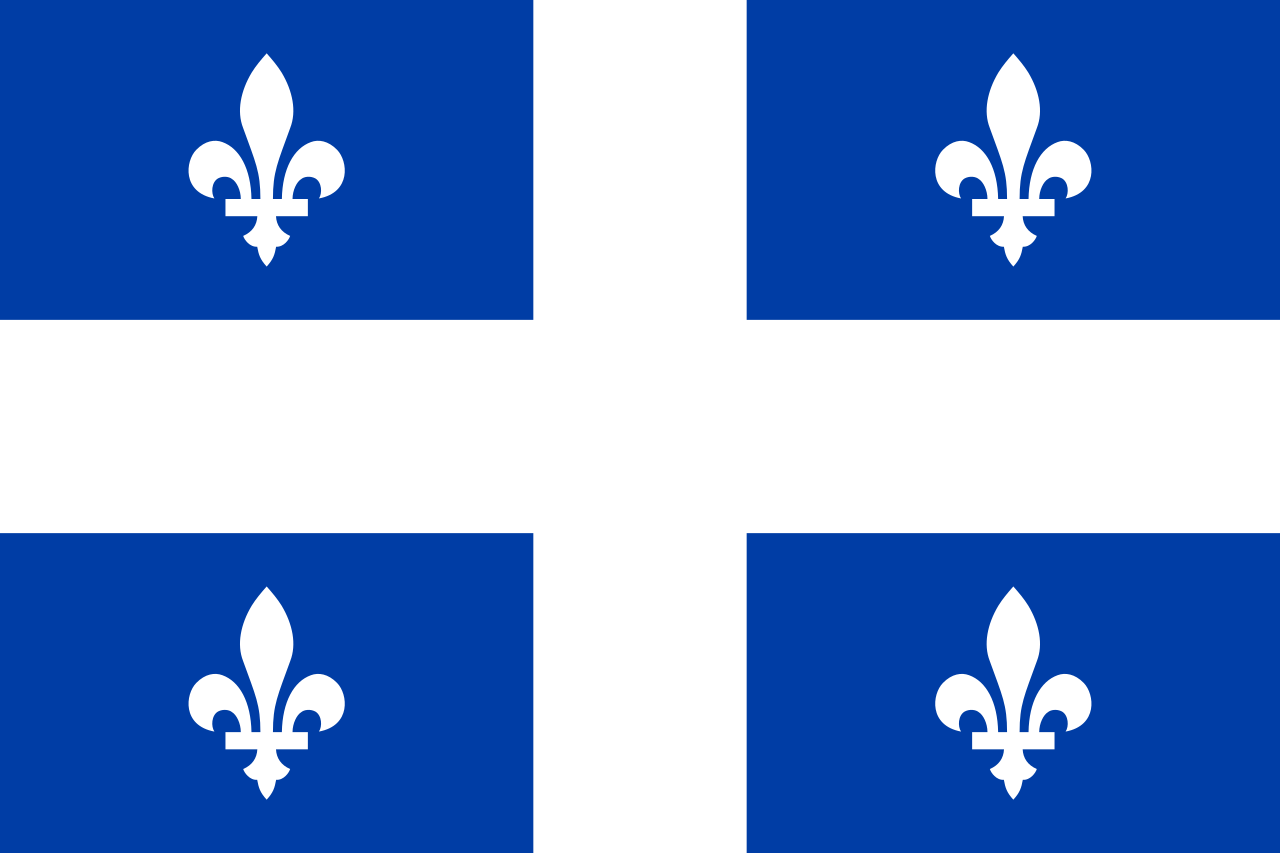 Quebec-QC
Quebec-QC

 Sport
Sport
 Triathlon
Triathlon

 Important port
Important port

Montreal (/ˌmʌntriˈɔːl/ ( listen) MUN-tree-AWL;[14] French: [mɔ̃ʁeal] (
listen) MUN-tree-AWL;[14] French: [mɔ̃ʁeal] ( listen); officially Montréal) is the most populous municipality in the Canadian province of Quebec and the second-most populous municipality in Canada. Originally called Ville-Marie, or "City of Mary",[15] it is named after Mount Royal,[16] the triple-peaked hill in the heart of the city. The city is centred on the Island of Montreal, which took its name from the same source as the city,[17][18] and a few much smaller peripheral islands, the largest of which is Île Bizard. It has a distinct four-season continental climate with warm to hot summers and cold, snowy winters.[19]
listen); officially Montréal) is the most populous municipality in the Canadian province of Quebec and the second-most populous municipality in Canada. Originally called Ville-Marie, or "City of Mary",[15] it is named after Mount Royal,[16] the triple-peaked hill in the heart of the city. The city is centred on the Island of Montreal, which took its name from the same source as the city,[17][18] and a few much smaller peripheral islands, the largest of which is Île Bizard. It has a distinct four-season continental climate with warm to hot summers and cold, snowy winters.[19]
In 2016, the city had a population of 1,704,694,[9] with a population of 1,942,044 in the urban agglomeration, including all of the other municipalities on the Island of Montreal.[9] The broader metropolitan area had a population of 4,098,927.[11] French is the city's official language[20][21] and is the language spoken at home by 49.8% of the population of the city, followed by English at 22.8% and 18.3% other languages (in the 2016 census, not including multi-language responses).[9] In the larger Montreal Census Metropolitan Area, 65.8% of the population speaks French at home, compared to 15.3% who speak English.[11] The agglomeration Montreal is one of the most bilingual cities in Quebec and Canada, with over 59% of the population able to speak both English and French.[9] Montreal is the second-largest primarily French-speaking city in the world, after Paris.[22][23][24][25] It is situated 258 kilometres (160 mi) south-west of Quebec City.
Historically the commercial capital of Canada, Montreal was surpassed in population and in economic strength by Toronto in the 1970s.[26] It remains an important centre of commerce, aerospace, transport, finance, pharmaceuticals, technology, design, education, art, culture, tourism, food, fashion, gaming, film, and world affairs. Montreal has the second-highest number of consulates in North America,[27] serves as the location of the headquarters of the International Civil Aviation Organization, and was named a UNESCO City of Design in 2006.[28][29] In 2017, Montreal was ranked the 12th most liveable city in the world by the Economist Intelligence Unit in its annual Global Liveability Ranking,[30] and the best city in the world to be a university student in the QS World University Rankings.[31]
Montreal has hosted multiple international conferences and events, including the 1967 International and Universal Exposition and the 1976 Summer Olympics.[32][33] It is the only Canadian city to have held the Summer Olympics. In 2018, Montreal was ranked as an Alpha− world city.[34] As of 2016 the city hosts the Canadian Grand Prix of Formula One,[35] the Montreal International Jazz Festival[36] and the Just for Laughs festival.[37]

Nashville is the capital and most populous city of the U.S. state of Tennessee. It is the county seat of Davidson County and is located on the Cumberland River.[7] With a population of 689,447 as of the 2020 U.S. census,[5] Nashville is the 21st most-populous city in the United States and the fourth most populous city in the Southeastern United States.
Named for Francis Nash, a general of the Continental Army during the American Revolutionary War, the city was founded in 1779. The city grew quickly due to its strategic location as a port on the Cumberland River and, in the 19th century, a railroad center. Nashville seceded with Tennessee during the American Civil War; in 1862 it was the first state capital in the Confederacy to fall to Union troops. After the war, the city reclaimed its position and developed a manufacturing base.
Since 1963, Nashville has had a consolidated city-county government, which includes six smaller municipalities in a two-tier system. The city is governed by a mayor, a vice-mayor, and a 40-member metropolitan council; 35 of the members are elected from single-member districts, while the other five are elected at-large. Reflecting the city's position in state government, Nashville is home to the Tennessee Supreme Court's courthouse for Middle Tennessee, one of the state's three divisions.
A major center for the music industry, especially country music, Nashville is commonly known as "Music City".[8] It is also home to numerous colleges and universities, including Tennessee State University, Vanderbilt University, Belmont University, Fisk University, Trevecca Nazarene University, Lipscomb University, and The Belonging Co College, a satellite campus of Southeastern University (Florida) housed within The Belonging Co, a nondenominational Christian church. Nashville is sometimes referred to as "Athens of the South" due to the large number of educational institutions.[9] The city is also a major center for the healthcare,[10] publishing,[11] banking,[12] automotive,[13] technology,[14] and transportation industries. Entities with headquarters in the city include AllianceBernstein,[15] Asurion,[16] Bridgestone Americas,[17] Captain D's,[18] Hospital Corporation of America,[19] LifeWay Christian Resources,[20] Logan's Roadhouse,[21] and Ryman Hospitality Properties.

 FIFA Fussball-Weltmeisterschaft 2026
FIFA Fussball-Weltmeisterschaft 2026

 Financial
Financial
 ***Global Financial Center
***Global Financial Center

 History
History
 N 2000 - 2100 AD
N 2000 - 2100 AD

 History
History
 M 1500 - 2000 AD
M 1500 - 2000 AD

 International cities
International cities
 ***Global Urban Economic Competitiveness
***Global Urban Economic Competitiveness

 New York-NY
New York-NY
 Silk road
Silk road
 United States
United States

 Important port
Important port
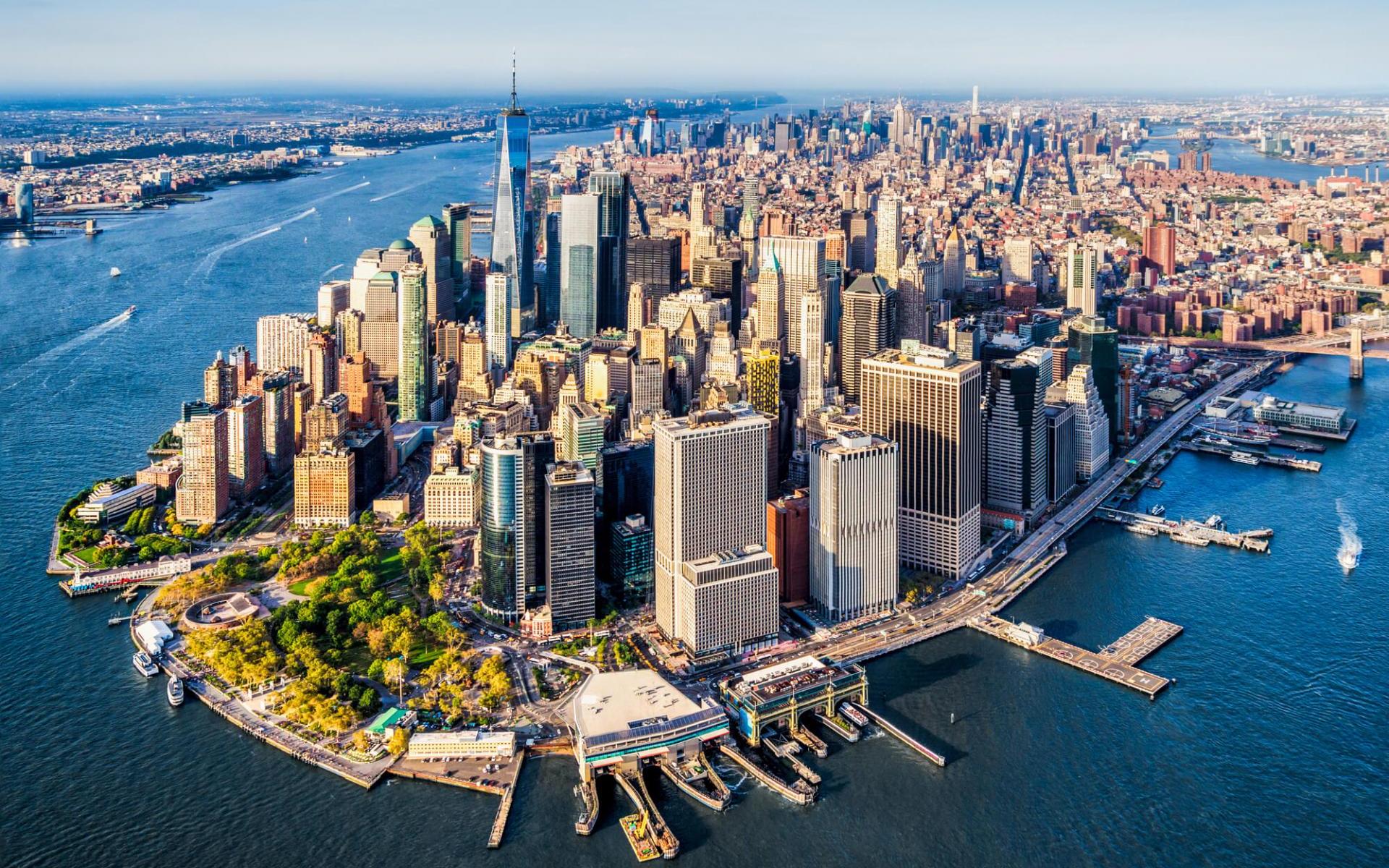
New York, often called New York City (NYC) to distinguish it from the State of New York, is the most populous city in the United States. With a 2020 population of 8,804,190 distributed over 300.46 square miles (778.2 km2), New York City is also the most densely populated major city in the United States. Located at the southern tip of the state of New York, the city is the center of the New York metropolitan area, the largest metropolitan area in the world by urban landmass.[9] With over 20.1 million people in its metropolitan statistical area and 23.5 million in its combined statistical area as of 2020, New York is one of the world's most populous megacities. New York City is a global cultural, financial, and media center with a significant influence on commerce, entertainment, research, technology, education, politics, tourism, dining, art, fashion, and sports. It is the most photographed city in the world.[10] Home to the headquarters of the United Nations, New York is an important center for international diplomacy,[11][12] an established safe haven for global investors,[13] and is sometimes described as the capital of the world.
Situated on one of the world's largest natural harbors, with water covering 36.4% of its surface area, New York City is composed of five boroughs, each of which is coextensive with a respective county of the state of New York. The five boroughs—Brooklyn (Kings County), Queens (Queens County), Manhattan (New York County), the Bronx (Bronx County), and Staten Island (Richmond County)—were created when local governments were consolidated into a single municipal entity in 1898.[14] The city and its metropolitan area constitute the premier gateway for legal immigration to the United States. As many as 800 languages are spoken in New York,[15] making it the most linguistically diverse city in the world. New York is home to more than 3.2 million residents born outside the United States, the largest foreign-born population of any city in the world as of 2016.[16][17] As of 2018, the New York metropolitan area is estimated to produce a gross metropolitan product (GMP) of nearly $1.8 trillion, ranking it first in the United States. If the New York metropolitan area were a sovereign state, it would have the eighth-largest economy in the world. New York is home to the highest number of billionaires of any city in the world.[18]
New York City traces its origins to a trading post founded on the southern tip of Manhattan Island by Dutch colonists in approximately 1624. The settlement was named New Amsterdam (Dutch: Nieuw Amsterdam) in 1626 and was chartered as a city in 1653. The city came under English control in 1664 and was renamed New York after King Charles II of England granted the lands to his brother, the Duke of York.[19][20] The city was regained by the Dutch in July 1673 and was renamed New Orange for one year and three months; the city has been continuously named New York since November 1674. New York City was the capital of the United States from 1785 until 1790,[21] and has been the largest U.S. city since 1790. The Statue of Liberty greeted millions of immigrants as they came to the U.S. by ship in the late 19th and early 20th centuries, and is a symbol of the U.S. and its ideals of liberty and peace.[22] In the 21st century, New York has emerged as a global node of creativity, entrepreneurship,[23] and environmental sustainability,[24][25] and as a symbol of freedom and cultural diversity.[26] In 2019, New York was voted the greatest city in the world per a survey of over 30,000 people from 48 cities worldwide, citing its cultural diversity.[27]
Many districts and monuments in New York City are major landmarks, including three of the world's ten most visited tourist attractions in 2013.[28] A record 66.6 million tourists visited New York City in 2019. Times Square is the brightly illuminated hub of the Broadway Theater District,[29] one of the world's busiest pedestrian intersections,[28][30] and a major center of the world's entertainment industry.[31] Many of the city's landmarks, skyscrapers, and parks are known around the world, as is the city's fast pace, spawning the term New York minute. The Empire State Building has become the global standard of reference to describe the height and length of other structures.[32] Manhattan's real estate market is among the most expensive in the world.[33][34] Providing continuous 24/7 service and contributing to the nickname The City That Never Sleeps, the New York City Subway is the largest single-operator rapid transit system worldwide, with 472 passenger rail stations. The city has over 120 colleges and universities, including Columbia University, New York University, and the City University of New York system, which is the largest urban public university system in the United States. Anchored by Wall Street in the Financial District of Lower Manhattan, New York City has been called both the world's leading financial center and the most powerful city in the world,[35] and is home to the world's two largest stock exchanges by total market capitalization, the New York Stock Exchange and Nasdaq.[36][37]

Ottawa (/ˈɒtəwə/ ( listen), /-wɑː/; French pronunciation: [ɔtawa]) is the capital city of Canada. It stands on the south bank of the Ottawa River in the eastern portion of southern Ontario. Ottawa borders Gatineau, Quebec; the two form the core of the Ottawa–Gatineau census metropolitan area (CMA) and the National Capital Region (NCR).[12] As of 2016, Ottawa had a city population of 964,743 and a metropolitan population of 1,323,783 making it the fourth-largest city and the fifth-largest CMA in Canada.
listen), /-wɑː/; French pronunciation: [ɔtawa]) is the capital city of Canada. It stands on the south bank of the Ottawa River in the eastern portion of southern Ontario. Ottawa borders Gatineau, Quebec; the two form the core of the Ottawa–Gatineau census metropolitan area (CMA) and the National Capital Region (NCR).[12] As of 2016, Ottawa had a city population of 964,743 and a metropolitan population of 1,323,783 making it the fourth-largest city and the fifth-largest CMA in Canada.
Founded in 1826 as Bytown, and incorporated as Ottawa in 1855, the city has evolved into the political centre of Canada. Its original boundaries were expanded through numerous annexations and were ultimately replaced by a new city incorporation and amalgamation in 2001 which significantly increased its land area. The city name "Ottawa" was chosen in reference to the Ottawa River, the name of which is derived from the Algonquin Odawa, meaning "to trade".[13]
Ottawa has the most educated population among Canadian cities[14] and is home to a number of post-secondary, research, and cultural institutions, including the National Arts Centre, the National Gallery, and numerous national museums. Ottawa has the highest standard of living in the nation and low unemployment.

Perth (/pɜːrθ/ ( listen)) is the capital and largest city of the Australian state of Western Australia (WA).[8] It is the fourth most populous city in Australia and Oceania, with a population of 2.1 million (80% of the state) living in Greater Perth in 2020.[1] Perth is part of the South West Land Division of Western Australia, with most of the metropolitan area on the Swan Coastal Plain between the Indian Ocean and the Darling Scarp. The city has expanded outward from the original British settlements on the Swan River, upon which the city's central business district and port of Fremantle are situated. Perth is located on the traditional lands of the Whadjuk Noongar people, where Aboriginal Australians have lived for at least 38,000 years.
listen)) is the capital and largest city of the Australian state of Western Australia (WA).[8] It is the fourth most populous city in Australia and Oceania, with a population of 2.1 million (80% of the state) living in Greater Perth in 2020.[1] Perth is part of the South West Land Division of Western Australia, with most of the metropolitan area on the Swan Coastal Plain between the Indian Ocean and the Darling Scarp. The city has expanded outward from the original British settlements on the Swan River, upon which the city's central business district and port of Fremantle are situated. Perth is located on the traditional lands of the Whadjuk Noongar people, where Aboriginal Australians have lived for at least 38,000 years.
Captain James Stirling founded Perth in 1829 as the administrative centre of the Swan River Colony. It was named after the city of Perth in Scotland, due to the influence of Stirling's patron Sir George Murray, who had connections with the area. It gained city status in 1856, although the Perth City Council currently governs only a small area around the central business district. The city's population increased substantially as a result of the Western Australian gold rushes in the late 19th century. It has grown steadily since World War II due to a high net migration rate. Post-war immigrants were predominantly from Britain and Southern Europe, while more recent arrivals have led to a large population of Asian descent. Several mining booms in other parts of Western Australia in the late 20th and early 21st centuries saw Perth become the regional headquarters for large mining operations.
Perth contains a number of important public buildings as well as various historic sites. Notable government buildings include Parliament House, Government House, the Supreme Court Buildings and the Perth Mint. The city is served by Fremantle Harbour and Perth Airport. It was a naval base for the Allies during World War II and the Royal Australian Navy's Fleet Base West is located on Garden Island. All five of Western Australia's universities are based in Perth. The city has been ranked as one of the world's most liveable cities, and was classified by the Globalization and World Cities Research Network in 2020 as a Beta global city.[9]
As of 2021, Perth is divided into 30 local government areas and consists of more than 350 suburbs. The metropolitan boundaries stretch 123 kilometres (76 mi) from Two Rocks in the north to Singleton in the south,[10] and 62 kilometres (39 mi) east inland to The Lakes. Outside of the central business district, important urban centres within the metropolitan area include Armadale, Fremantle, Joondalup, Midland, and Rockingham. Most of those were originally established as separate settlements and retained a distinct identity after being subsumed into the wider metropolitan area. Mandurah, Western Australia's second-largest city, forms a conurbation with Perth along the coast, though for most purposes it is still considered a separate city.

 FIFA Fussball-Weltmeisterschaft 2026
FIFA Fussball-Weltmeisterschaft 2026
 Women's Soccer World Cup 2003
Women's Soccer World Cup 2003

 Pennsylvania-PA
Pennsylvania-PA
 United States
United States

 Important port
Important port

Philadelphia (colloquially known simply as Philly) is the largest city in the Commonwealth of Pennsylvania in the United States. It is the sixth-most-populous city in the United States and the most populous city in the state of Pennsylvania, with a 2020 population of 1,603,797.[6] It is also the second-most populous city in the Northeastern United States, behind New York City. Since 1854, the city has had the same geographic boundaries as Philadelphia County, the most-populous county in Pennsylvania and the urban core of the eighth-largest U.S. metropolitan statistical area, with over 6 million residents as of 2017.[9] Philadelphia is also the economic and cultural center of the greater Delaware Valley along the lower Delaware and Schuylkill rivers within the Northeast megalopolis. The Delaware Valley's 2019 estimated population of 7.21 million makes it the ninth-largest combined statistical area in the United States.[10]
Philadelphia is one of the oldest municipalities in the United States. William Penn, an English Quaker, founded the city in 1682 to serve as capital of the Pennsylvania Colony.[4][11] Philadelphia played an instrumental role in the American Revolution as a meeting place for the Founding Fathers of the United States, who signed the Declaration of Independence in 1776 at the Second Continental Congress, and the Constitution at the Philadelphia Convention of 1787. Several other key events occurred in Philadelphia during the Revolutionary War including the First Continental Congress, the preservation of the Liberty Bell, the Battle of Germantown, and the Siege of Fort Mifflin. Philadelphia remained the nation's largest city until being overtaken by New York City in 1790; the city was also one of the nation's capitals during the revolution, serving as temporary U.S. capital while Washington, D.C. was under construction.
In the 19th and 20th centuries, Philadelphia became a major industrial center and a railroad hub. The city grew due to an influx of European immigrants, most of whom initially came from Ireland and Germany—the two largest reported ancestry groups in the city as of 2015. Later immigrant groups in the 20th century came from Italy (Italian being the third largest European ethnic ancestry currently reported in Philadelphia) and other Southern European and Eastern European countries.[12] In the early 20th century, Philadelphia became a prime destination for African Americans during the Great Migration after the Civil War.[13] Puerto Ricans began moving to the city in large numbers in the period between World War I and II, and in even greater numbers in the post-war period.[14] The city's population doubled from one million to two million people between 1890 and 1950.
The Philadelphia area's many universities and colleges make it a top study destination, as the city has evolved into an educational and economic hub.[15][16] As of 2019, the Philadelphia metropolitan area is estimated to produce a gross metropolitan product (GMP) of $490 billion.[17] Philadelphia is the center of economic activity in Pennsylvania and is home to five Fortune 1000 companies. The Philadelphia skyline is expanding, with a market of almost 81,900 commercial properties in 2016,[18] including several nationally prominent skyscrapers.[19] Philadelphia has more outdoor sculptures and murals than any other American city.[20][21] Fairmount Park, when combined with the adjacent Wissahickon Valley Park in the same watershed, is one of the largest contiguous urban park areas in the United States.[22] The city is known for its arts, culture, cuisine, and colonial history, attracting 42 million domestic tourists in 2016 who spent $6.8 billion, generating an estimated $11 billion in total economic impact in the city and surrounding four counties of Pennsylvania.[23] Philadelphia is also a biotechnology hub.[24]
Philadelphia is the home of many U.S. firsts, including the nation's first library (1731),[25] hospital (1751),[25] medical school (1765),[26] national capital (1774),[27] university (by some accounts) (1779),[28] stock exchange (1790),[25] zoo (1874),[29] and business school (1881).[30] Philadelphia contains 67 National Historic Landmarks and the World Heritage Site of Independence Hall.[31] The city became a member of the Organization of World Heritage Cities in 2015,[32] as the first World Heritage City in the United States.
 Victoria-VIC
Victoria-VIC
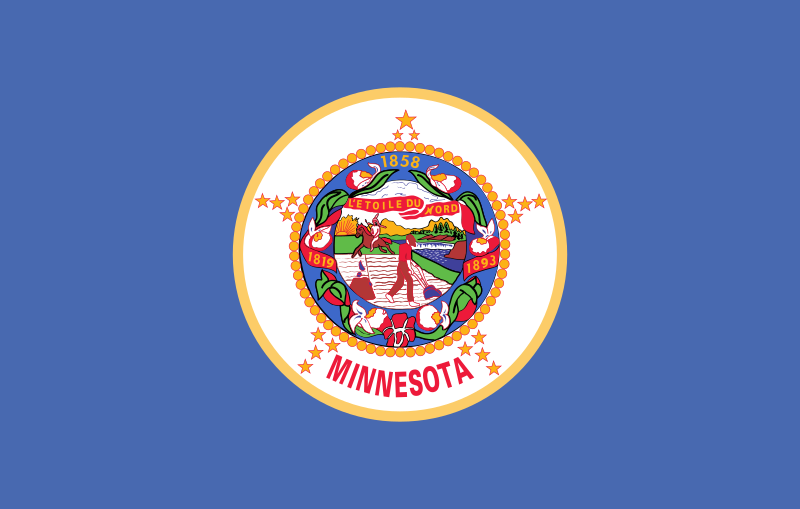 Minnesota-MN
Minnesota-MN
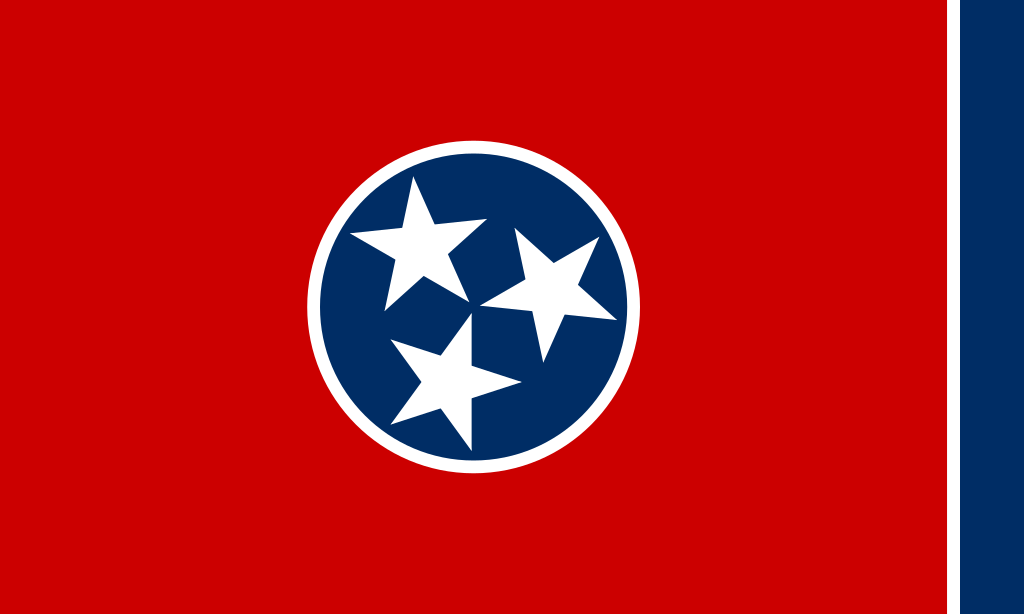 Tennessee-TN
Tennessee-TN
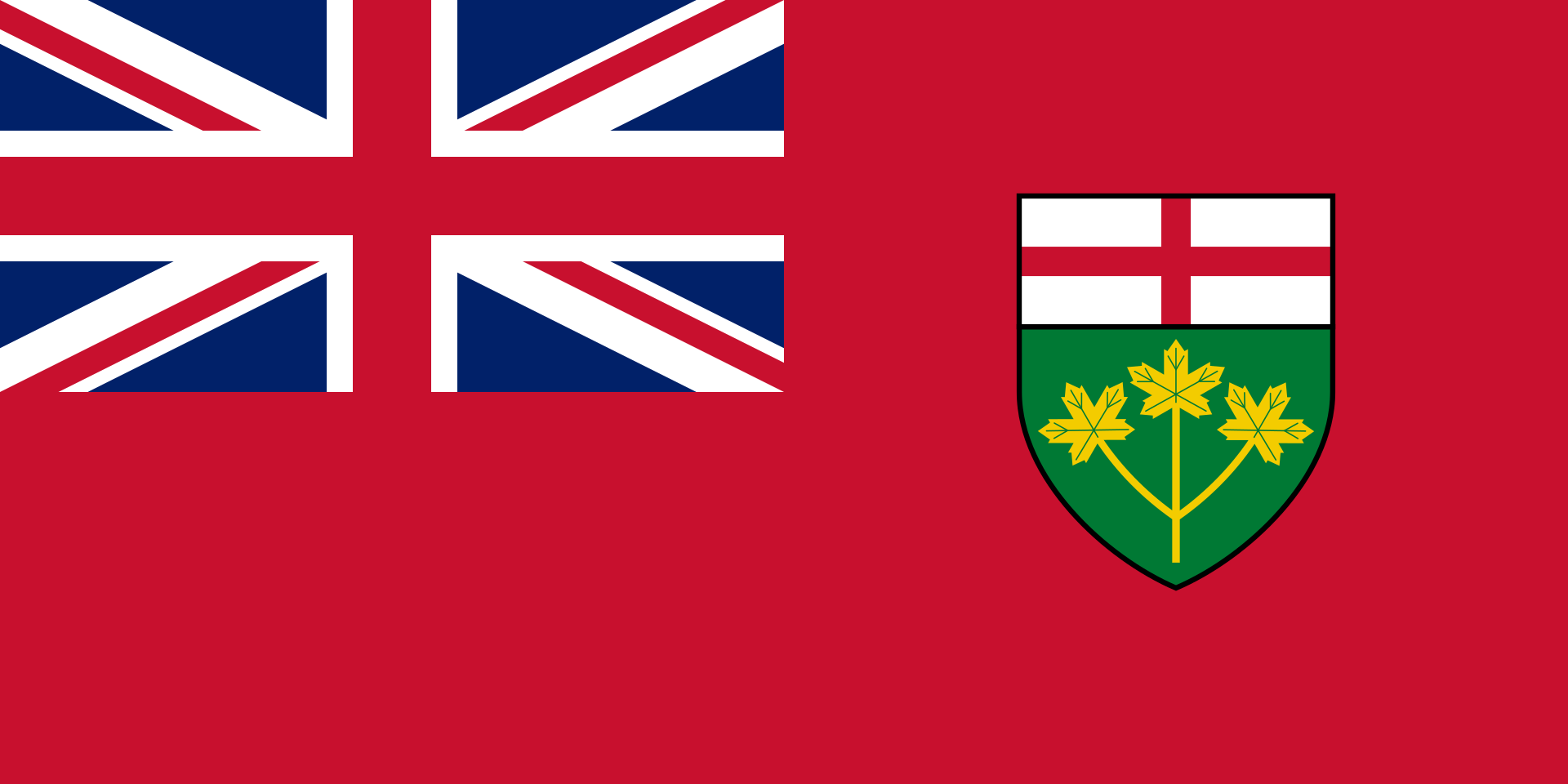 Ontario-ON
Ontario-ON
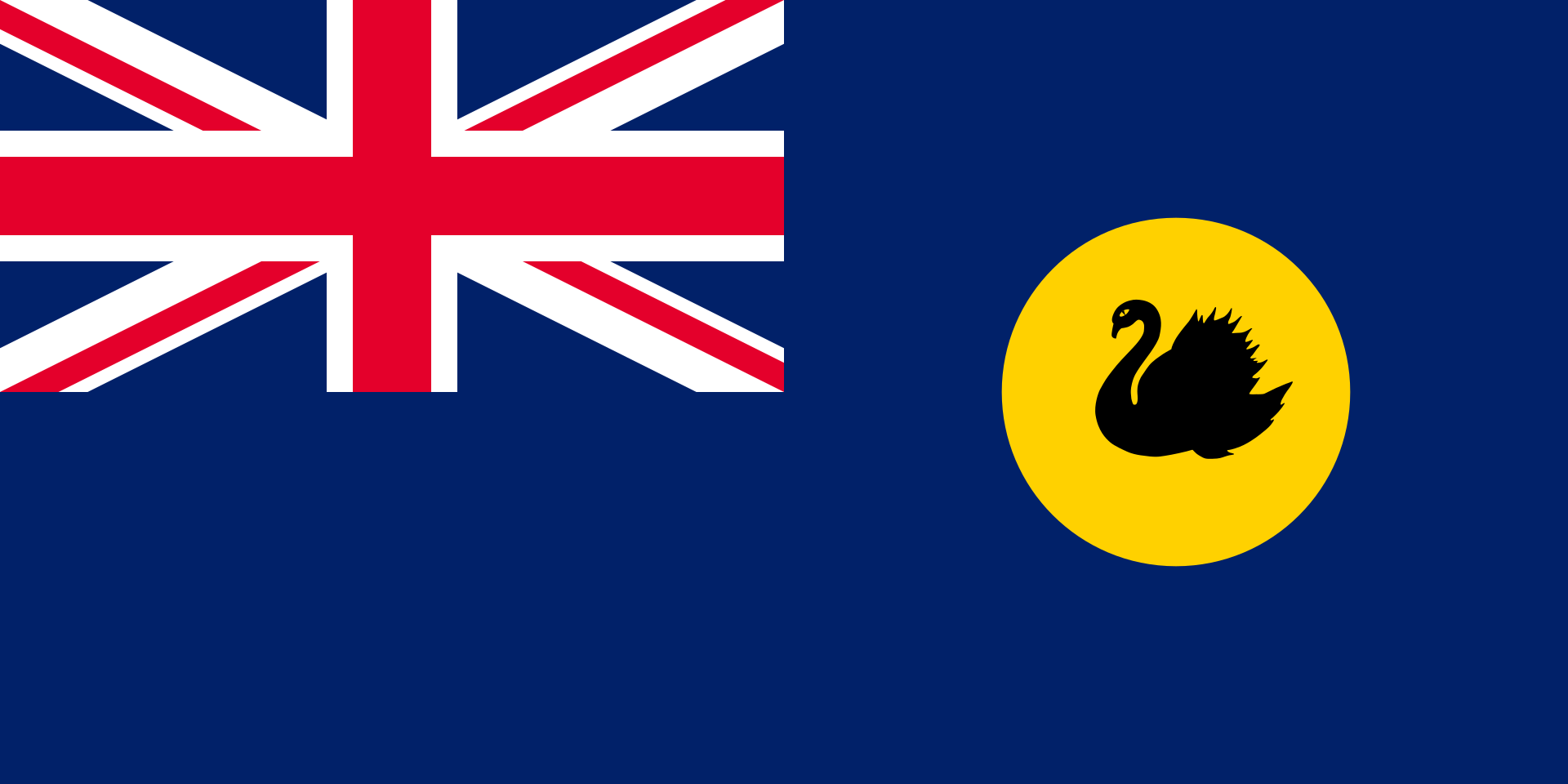 Western Australia-WA
Western Australia-WA